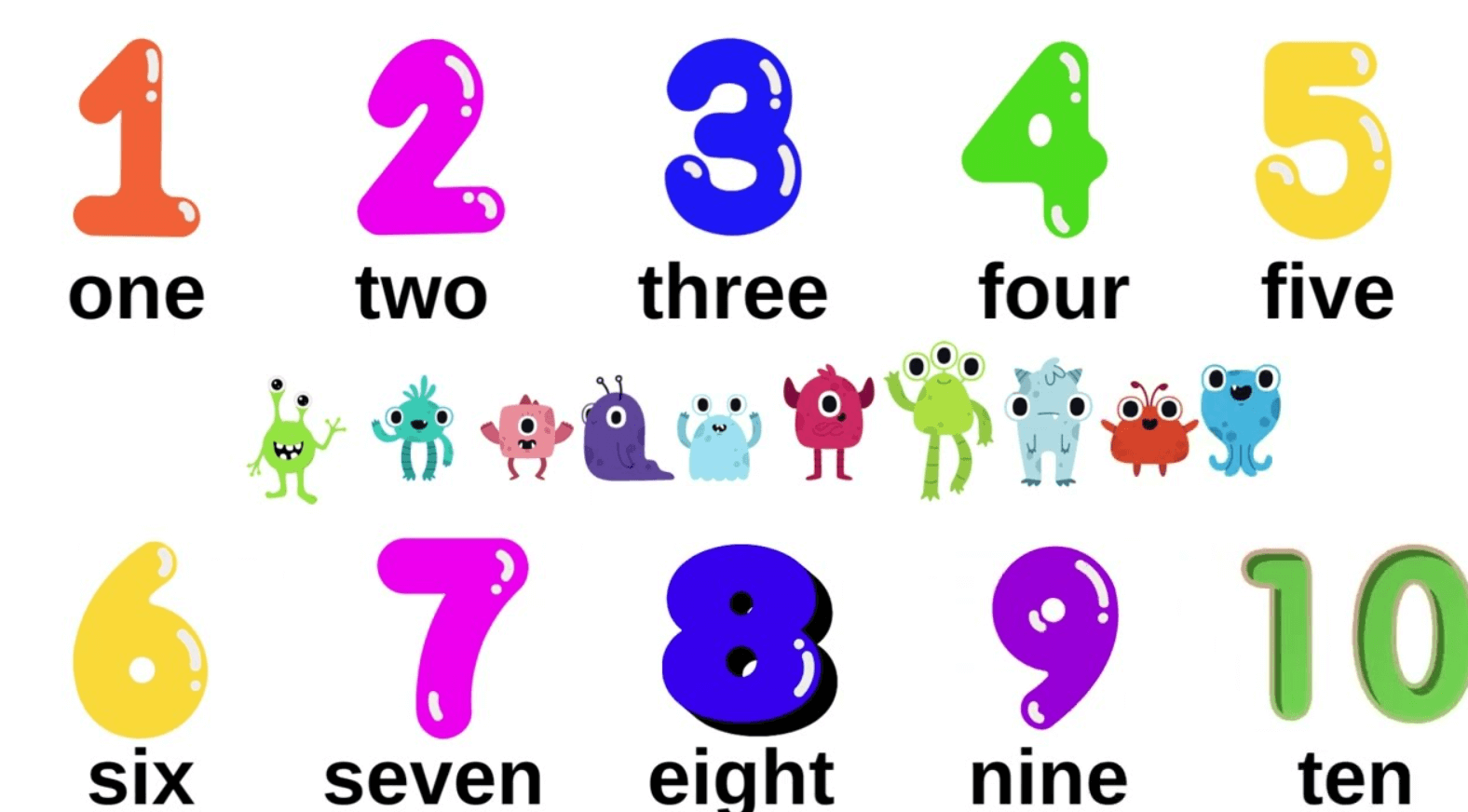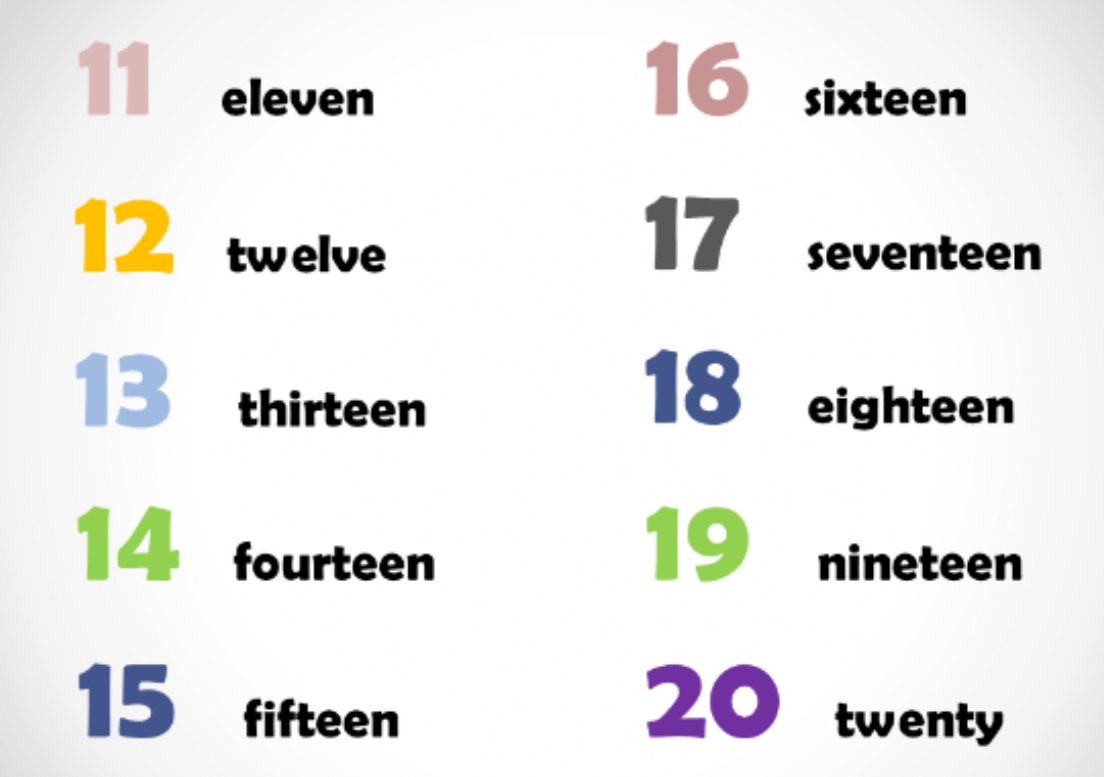Understanding and using numbers from 1 to 100 is essential for day-to-day life. This guide helps you learn how to write, count, and spell these numbers clearly. It’s useful for people of all ages who want to handle numbers confidently in their daily activities. Why does this matter? Well, knowing your numbers helps you in everything from shopping and cooking to managing time and money. Let’s dig into how this works in everyday situations.
Counting in English: Basics and Number Sequence
Numbers 1-10

Learning English numbers 1 through 10 is key for basic math skills. These numbers are: one, two, three, four, five, six, seven, eight, nine, and ten. They help young kids grasp simple math ideas and start counting. Each number has a value and a place in a line, which is crucial for understanding tougher math later on. Also, saying these numbers clearly matters in everyday life, like when you’re shopping, planning, or talking about amounts. Knowing these numbers well helps with more advanced math and language skills down the road.
| Number | Word |
| 1 | One |
| 2 | Two |
| 3 | Three |
| 4 | Four |
| 5 | Five |
| 6 | Six |
| 7 | Seven |
| 8 | Eight |
| 9 | Nine |
| 10 | Ten |
Multiples (by 2, 5, and 10)
Learning to count by 2, 5, and 10 is really helpful for understanding more complicated math. When you count by 2s, these are the even numbers. They help you see patterns and balance in math. Counting by 5s makes adding or subtracting fast, which is handy when you’re managing time or money. Then there’s counting by 10s, which is essential for using the decimal system. This is crucial for dealing with money and measuring things in everyday life.
| Count | Multiples of 2 | Multiples of 5 | Multiples of 10 |
| 1 | 2 | 5 | 10 |
| 2 | 4 | 10 | 20 |
| 3 | 6 | 15 | 30 |
| 4 | 8 | 20 | 40 |
| 5 | 10 | 25 | 50 |
| 6 | 12 | 30 | 60 |
| 7 | 14 | 35 | 70 |
| 8 | 16 | 40 | 80 |
| 9 | 18 | 45 | 90 |
| 10 | 20 | 50 | 100 |
Counting in English: Beyond 10
Numbers 11-20

Why should you learn numbers 11 to 20 in English? Well, they’re the basics you need for understanding more complex number use. They’re also crucial when you move on to tougher math. Plus, each number from 11 to 20 has its own unique word that doesn’t just follow a simple pattern, so knowing them helps you avoid confusion. This makes sure you’re clear in your conversations and writing, keeping things smooth in everyday situations.
| Count | Number | Word Format |
| 1 | 11 | eleven |
| 2 | 12 | twelve |
| 3 | 13 | thirteen |
| 4 | 14 | fourteen |
| 5 | 15 | fifteen |
| 6 | 16 | sixteen |
| 7 | 17 | seventeen |
| 8 | 18 | eighteen |
| 9 | 19 | nineteen |
| 10 | 20 | twenty |
Also Read: How To Tell Time In English: An Instructive Guide
English Counting 1 – 100
| Number | Word | Number | Word | Number | Word | Number | Word |
|---|---|---|---|---|---|---|---|
| 1 | One | 26 | Twenty-Six | 51 | Fifty-One | 76 | Seventy-Six |
| 2 | Two | 27 | Twenty-Seven | 52 | Fifty-Two | 77 | Seventy-Seven |
| 3 | Three | 28 | Twenty-Eight | 53 | Fifty-Three | 78 | Seventy-Eight |
| 4 | Four | 29 | Twenty-Nine | 54 | Fifty-Four | 79 | Seventy-Nine |
| 5 | Five | 30 | Thirty | 55 | Fifty-Five | 80 | Eighty |
| 6 | Six | 31 | Thirty-One | 56 | Fifty-Six | 81 | Eighty-One |
| 7 | Seven | 32 | Thirty-Two | 57 | Fifty-Seven | 82 | Eighty-Two |
| 8 | Eight | 33 | Thirty-Three | 58 | Fifty-Eight | 83 | Eighty-Three |
| 9 | Nine | 34 | Thirty-Four | 59 | Fifty-Nine | 84 | Eighty-Four |
| 10 | Ten | 35 | Thirty-Five | 60 | Sixty | 85 | Eighty-Five |
| 11 | Eleven | 36 | Thirty-Six | 61 | Sixty-One | 86 | Eighty-Six |
| 12 | Twelve | 37 | Thirty-Seven | 62 | Sixty-Two | 87 | Eighty-Seven |
| 13 | Thirteen | 38 | Thirty-Eight | 63 | Sixty-Three | 88 | Eighty-Eight |
| 14 | Fourteen | 39 | Thirty-Nine | 64 | Sixty-Four | 89 | Eighty-Nine |
| 15 | Fifteen | 40 | Forty | 65 | Sixty-Five | 90 | Ninety |
| 16 | Sixteen | 41 | Forty-One | 66 | Sixty-Six | 91 | Ninety-One |
| 17 | Seventeen | 42 | Forty-Two | 67 | Sixty-Seven | 92 | Ninety-Two |
| 18 | Eighteen | 43 | Forty-Three | 68 | Sixty-Eight | 93 | Ninety-Three |
| 19 | Nineteen | 44 | Forty-Four | 69 | Sixty-Nine | 94 | Ninety-Four |
| 20 | Twenty | 45 | Forty-Five | 70 | Seventy | 95 | Ninety-Five |
| 21 | Twenty-One | 46 | Forty-Six | 71 | Seventy-One | 96 | Ninety-Six |
| 22 | Twenty-Two | 47 | Forty-Seven | 72 | Seventy-Two | 97 | Ninety-Seven |
| 23 | Twenty-Three | 48 | Forty-Eight | 73 | Seventy-Three | 98 | Ninety-Eight |
| 24 | Twenty-Four | 49 | Forty-Nine | 74 | Seventy-Four | 99 | Ninety-Nine |
| 25 | Twenty-Five | 50 | Fifty | 75 | Seventy-Five | 100 | One Hundred |
Multiples of 10 (20-100)

Knowing the multiples of 10 from 20 to 100 really helps with math and everyday life. You see them a lot, like in prices, schedules, or when you count bigger groups of things. This avoids mix-ups when you’re buying something or when you’re looking at important numbers. Plus, being familiar with these numbers makes it easier to do everything from adding and subtracting to handling money or figuring out statistics.
| Multiple | Word Format |
| 20 | twenty |
| 30 | thirty |
| 40 | forty |
| 50 | fifty |
| 60 | sixty |
| 70 | seventy |
| 80 | eighty |
| 90 | ninety |
| 100 | one hundred |
Hundreds and Thousands
When you’re getting into higher numbers in English, you start by understanding how to say hundreds and thousands. Let’s break this down. In short, just remember to stack the numbers with their places—hundreds and thousands—and fill in any gaps with smaller numbers and conjunctions. It’s like building blocks, stacking up to form bigger numbers.
Here’s a table showing hundreds and thousands with their word formats:
| Number | Word Format |
| 100 | one hundred |
| 200 | two hundred |
| 300 | three hundred |
| 400 | four hundred |
| 500 | five hundred |
| 600 | six hundred |
| 700 | seven hundred |
| 800 | eight hundred |
| 900 | nine hundred |
| 1,000 | one thousand |
| 2,000 | two thousand |
| 3,000 | three thousand |
| 4,000 | four thousand |
| 5,000 | five thousand |
| 6,000 | six thousand |
| 7,000 | seven thousand |
| 8,000 | eight thousand |
| 9,000 | nine thousand |
| 10,000 | ten thousand |
Conclusion
Knowing numbers from 1 to 100 in English is crucial. It helps in everyday communication, managing money, and organizing daily tasks. Being good at counting, spelling, and writing these numbers boosts your math skills. It also makes it easier to use computers and other digital tools. So, learning these numbers well is important for doing well in school, moving ahead in your job, and managing everyday life efficiently.
For more such informative content, don’t forget to visit Translation Blog again!

